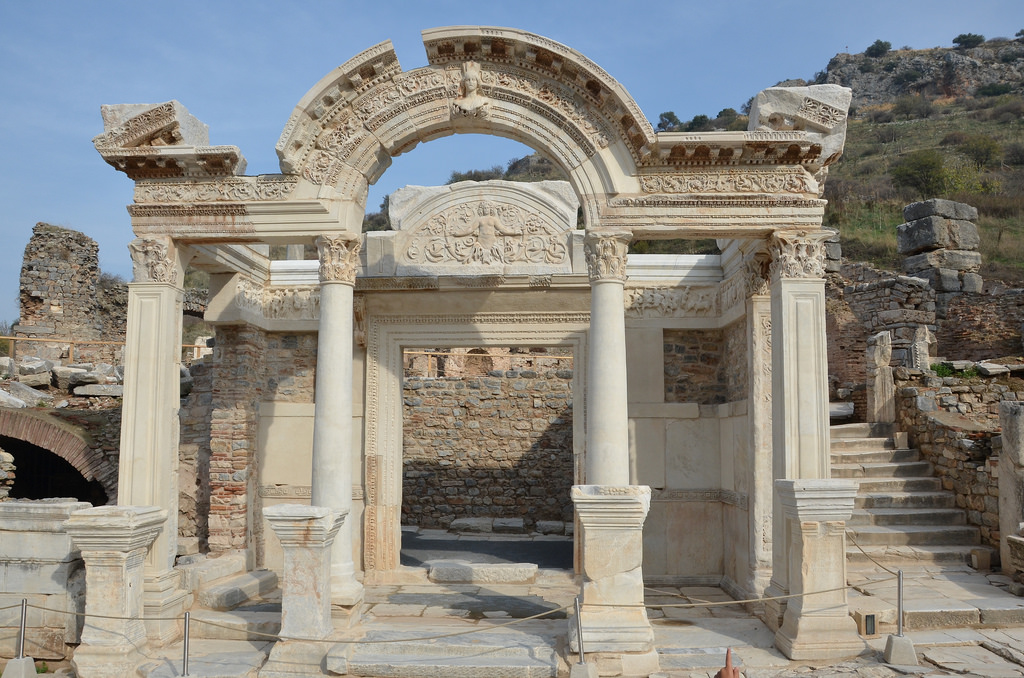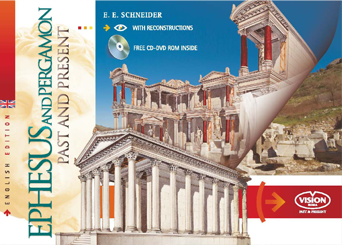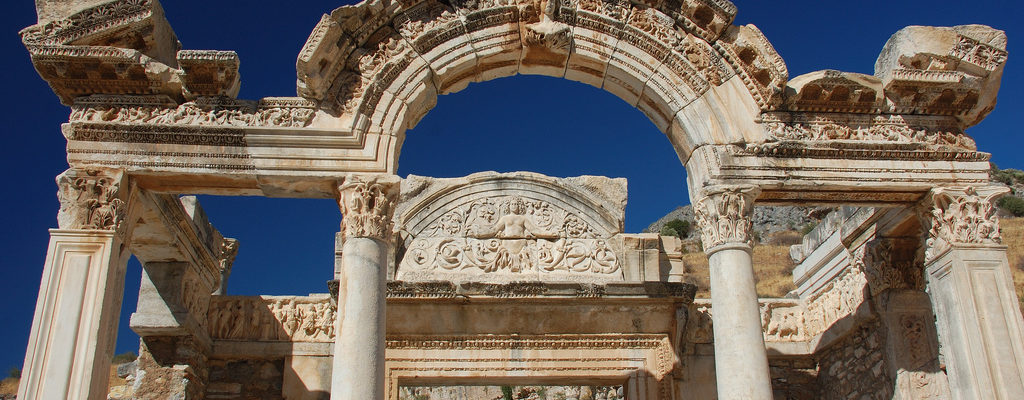This small temple was erected along Curetes Street and faces onto the street.
It was dedicated in 138 A.D. to the still-living emperor and to Artemis Ephesia by one P. Quintilius Galeria, at the invitation of the proconsul of Asia, Vedius Antoninus, but must not be confused with the temple of the imperial cult, the majestic Hadrianeion, discovered in the northern part of the city.
This is a temple of an almost private nature, and has some unique architectural features: a simple tetrastyle pronaos, with two pillars and two columns, topped by a pediment with an arch in the center, decorated with a bust of Tyche; the architrave is richly adorned with plant motifs and has a dedicatory inscription.
The entrance door of the small cell was topped by a lunette richly carved with a female figure emerging from acanthus leaves. Contrasting with the decoration of the façade, the interior of the temple must have been very simple; against the back wall of the cell, aligned with the door, was the base of the cult statue.

© Photo credits by shankar s under CC-BY-2.0
To a later period belong the four bases with inscriptions situated in front of the pillars and columns of the pronaos, and the four reliefs decorating the walls of the vestibule. Indeed, the bases probably held the statues of the tetrarchs Diocletian, Maximianus, Constantius Chlorus, and Galerius, while the subjects of the reliefs show episodes from the legend of the foundation of Ephesus, including the killing of the boar by Androclus.
The Temple of Hadrian is a very significant example of Asian architecture during the Roman Age, with its alternation of rectilinear and curved structures and the particular taste for a building with just a single viewpoint, the façade, on which the viewer’s attention is focused.

Do you want to know more about the history of Ephesus and Pergamon?
Check out our guidebook to Ephesus and Pergamon, with detailed history and Past & Present images of their greatest historical and archaeological sites.

